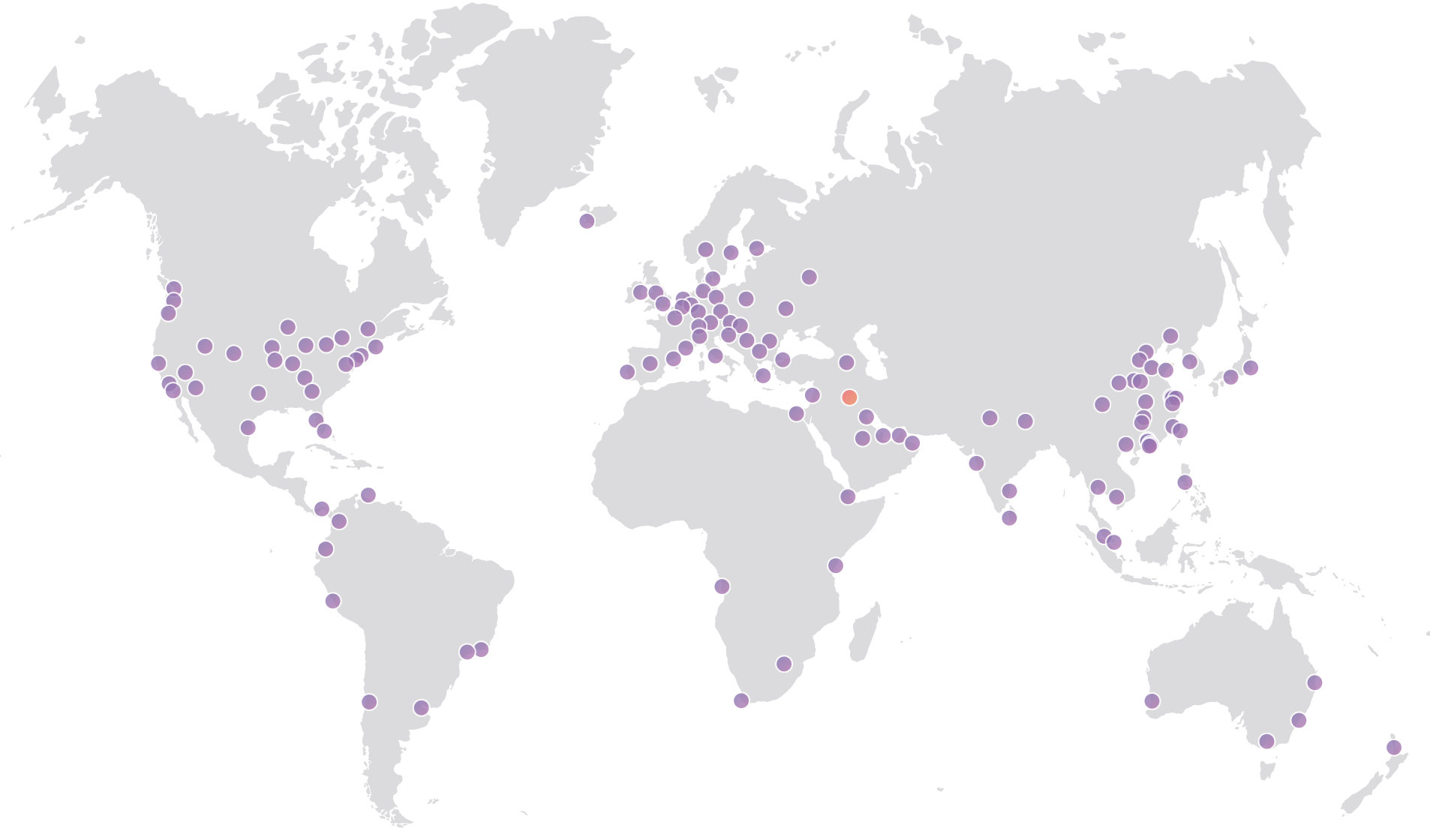Global ISP Cogent Deploys Kentik to Automate Traffic Engineering
 Kentik also allows the provider to optimize its network performance and find new revenue streams.
Kentik also allows the provider to optimize its network performance and find new revenue streams.
Pivot3, VMware Edge HCI Pushes Hyperconverged to Remote Offices
 HCI can reduce costs and complexity at remote offices.
HCI can reduce costs and complexity at remote offices.
Mesosphere Strikes First Reseller Deal With Portworx
 The deal combines Mesosphere's automated compute service with Portworx's automated storage platform.
The deal combines Mesosphere's automated compute service with Portworx's automated storage platform.
AT&T Sticking With LTE-M Technology for IoT
 Unlike competitors Verizon and T-Mobile, AT&T eschews NB-IoT for now.
Unlike competitors Verizon and T-Mobile, AT&T eschews NB-IoT for now.
Baghdad, Iraq: Cloudflare’s 128th Data Center


Cloudflare's newest data center is located in Baghdad, Iraq, in the region often known as the cradle of civilization. This expands our growing Middle East presence, while serving as our 45th data center in Asia, and 128th data center globally.
Even while accelerating over 7 million Internet properties, this deployment helps our effort to be closer to every Internet user. Previous, ISPs such as Earthlink were served from our Frankfurt data center. Nearly 40 million people live in Iraq.
Rich Cuisine
One of the world's largest producers of the sweet date palm, Iraq's cuisine dates back over 10,000 years and includes favorites such as,
- Kleicha: Date-filled cookies flavored with cardamom, saffron and rose water
- Mezza: a selection of appetizers to begin the meal
- Iraqi Dolma: stuffed vegetables with a tangy sauce
- Iraqi Biryani: cooked rice with spices, beans, grilled nuts and meat / vegetables
- Masgouf: whole baked fish marinated in oil, salt, pepper, turmeric and tamarind
New data centers
Baghdad is the first of eight deployments joining the Cloudflare global network just this week. Stay tuned!
The Cloudflare Global Anycast Network

This map reflects the network as of the publish date of this blog Continue reading
SolarWinds Deepens Visibility Into All-Flash Arrays
 The company released versions 6.6 of its storage resource monitor and server and application monitor.
The company released versions 6.6 of its storage resource monitor and server and application monitor.
Tune Into Our Introduction to Networking Technologies March 2018 Live Session
Tomorrow, March 15th, we will air our March 2018 Networking Technologies Live Session with Keith Bogart. This course is designed for those with absolutely no knowledge of computer networks, but who would like to learn more and possibly head down a career path working on computer networks.
- When:
- March 15, 2018 10 am PST/ 1 pm EST
- Instructor Info:
- This Course is taught by Keith Bogart, CCIE #4923. Keith started his networking career as customer service representative at Cisco Systems in 1996. His desire to learn more soon led him to a position as a Cisco Technical Assistance Center (TAC) engineer on the “Dial-Access” team, and within six months he had obtained his Dial-ISP CCIE. He later became a network consulting engineer and obtained his CCNA certification while teaching the technologies to Cisco employees during his lunch breaks. Keith was the first instructor on Cisco’s TAC Training team, where he taught a wide range of internetworking topics and later developed and taught other courses such as routing protocols, LAN switching, MPLS, 802.1x, and CCNA. After almost 17 years with Cisco, Keith joined a small startup and focused on 802.11 Wi-Fi technologies, during which time he obtained his Continue reading
Quitting My CCIE Status. Time to Move On.
 Its been 17 years since I achieved CCIE status. It was great but its not my future.
Its been 17 years since I achieved CCIE status. It was great but its not my future.History Of Networking – Tony Li – SSE and Hardware Switching
From processors, to FPGAs, to ASICs, and back again, Tony Li joins Network Collective’s History of Networking to talk through the impact that the Cisco SSE and hardware switching has had on the networking industry.
Outro Music:
Danger Storm Kevin MacLeod (incompetech.com)
Licensed under Creative Commons: By Attribution 3.0 License
http://creativecommons.org/licenses/by/3.0/
The post History Of Networking – Tony Li – SSE and Hardware Switching appeared first on Network Collective.
Datanauts 125: Security Gamification & Training New Talent
Is security gamification a useful tool for training security talent, or just a gimmick? The Datanauts dive in to explore this issue. Our guest is Evan Dornbush. The post Datanauts 125: Security Gamification & Training New Talent appeared first on Packet Pushers.IBM Cloud, Now Powered by Cloudflare

A Tale of Two New Relationships
Late last spring, we were seeking to expand our connections inside of IBM. IBM had first become a direct Cloudflare customer in 2016, when its X-force Exchange business selected Cloudflare, instead of traditional scrubbing center solutions, for DDoS protection, WAF, and Load Balancing. We had friendly relationships with several people inside of IBM’s Softlayer business. We learned that the IBM “Networking Tribe” was evaluating various solutions to fill product gaps that their cloud customers were experiencing for DDoS, DNS, WAF, and load balancing.
In trying to engage with the people leading the effort, I made a casual phone call late on a Friday afternoon to one of the IBMers based in Raleigh, NC. When he understood that I was from Cloudflare, he replied, “Oh, I know Cloudflare. You guys do DDoS protection, right?” I replied, “Well, yes, we do offer DDoS protection, but we also offer a number of other security and performance services.” He indicated that he would be in the Bay Area two weeks later, and that he would bring his team to our office if we could make the time.
Also late last spring, my wife delivered our baby Continue reading
Site Reliability Engineering: 4 Things to Know
Organizations that have embraced DevOps and cloud-native architecture might also want to investigate SRE. Interop ITX expert Rob Hirschfeld explains why.
